|
|
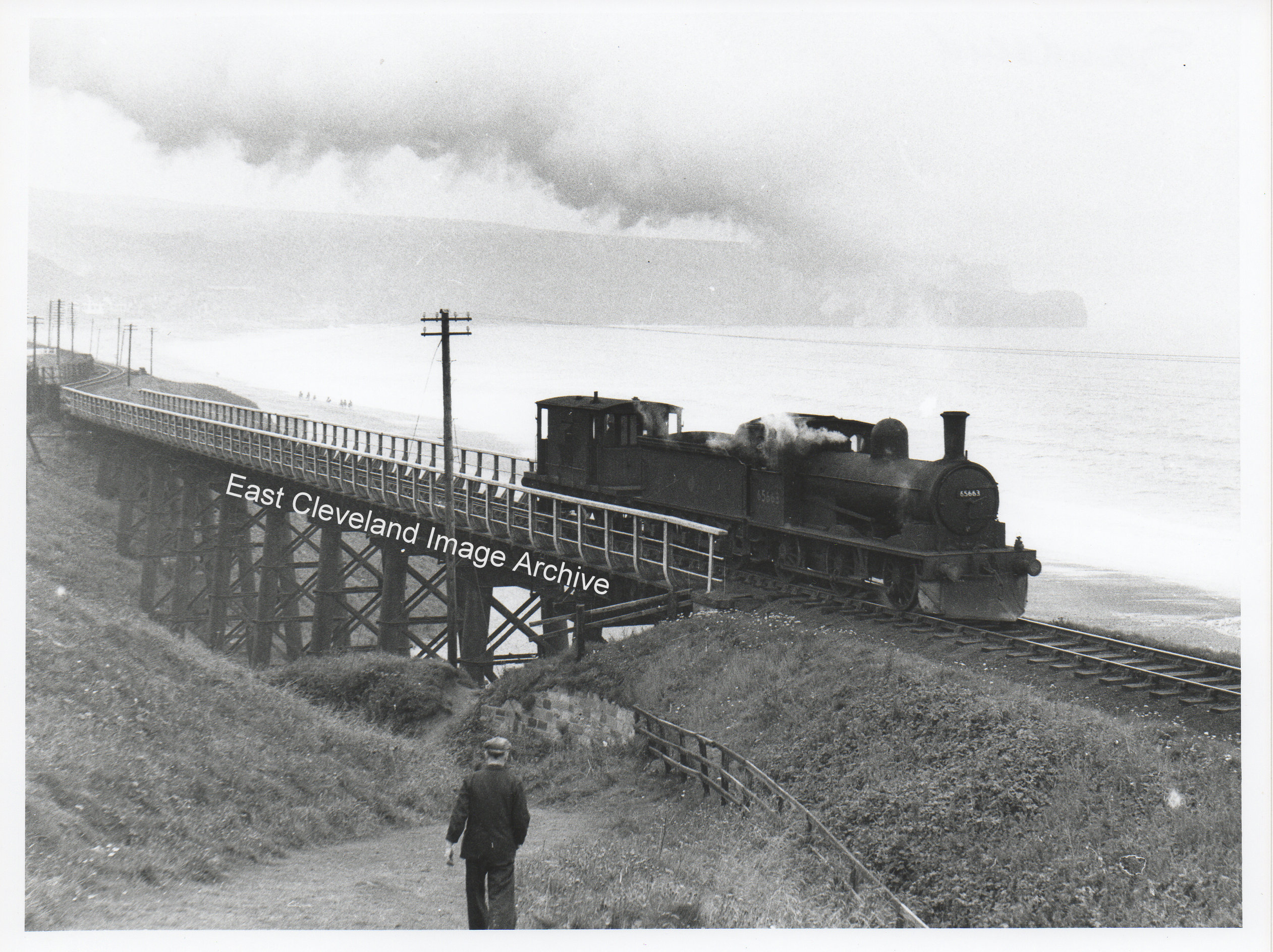
A shot of a J25 0-6-0 loco, number 65663, (based at Whitby shed) and guard’s van leaving Raithwaite Viaduct towards Whitby on the ”pick-up” goods. The locomotive is fitted with a snow-plough (known as a bufferbeam plough) . The logo on the tender looks like an early BR roundel. You only see guard’s vans on preserved railways these days, despite objections from the railmen’s union they were removed from service early in the diesel era.
Image courtesy of Maurice Grayson (from the Ken Hoole/Neville Stead Collection) and thanks to Mark for the details.
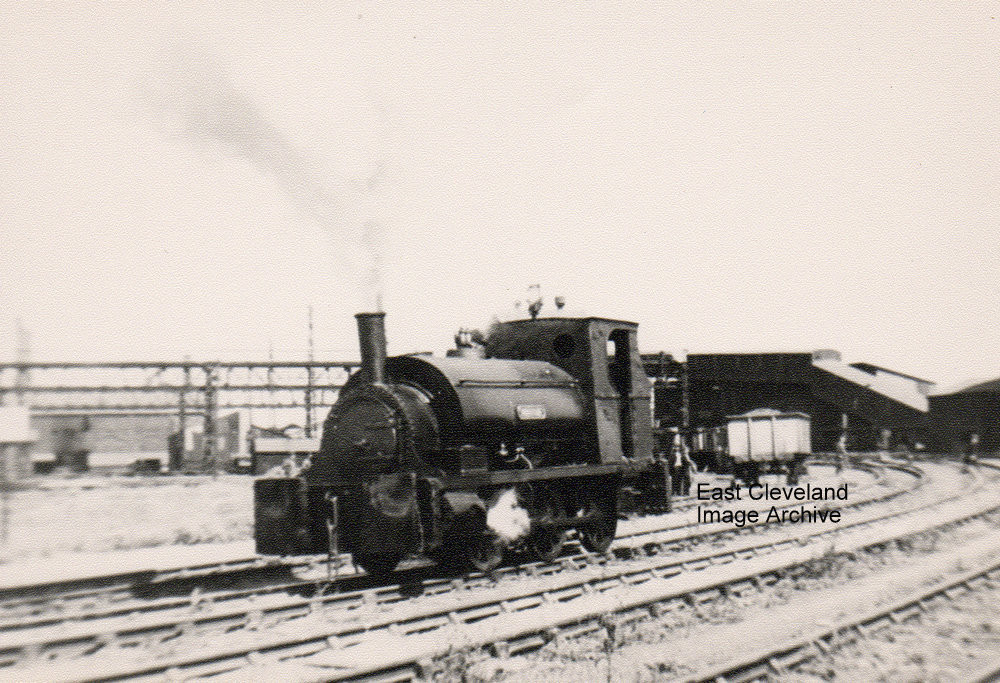
This is a photograph of Minnie, a diminutive 0-6-0 saddle-tank loco, much-loved on Skinningrove Works. In her day she was the work-horse on the site, seemingly everywhere, fussing about with a train-load of trucks. It is believed she was a quarry locomotive originally and that is where she went to end her days too after Skinningrove outgrew her.
Image courtesy of the Pem Holliday Collection.
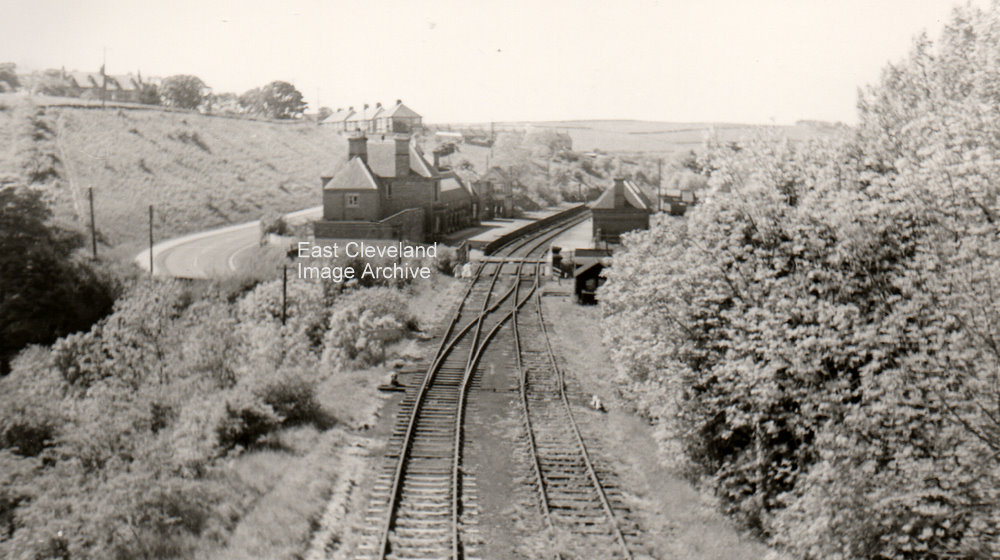
A view of Loftus Station, looking towards Liverton Mines from the Rosecroft Lane bridge, visible in the previous post. Today the station is a private house; with only a single rail track running past the buildings.
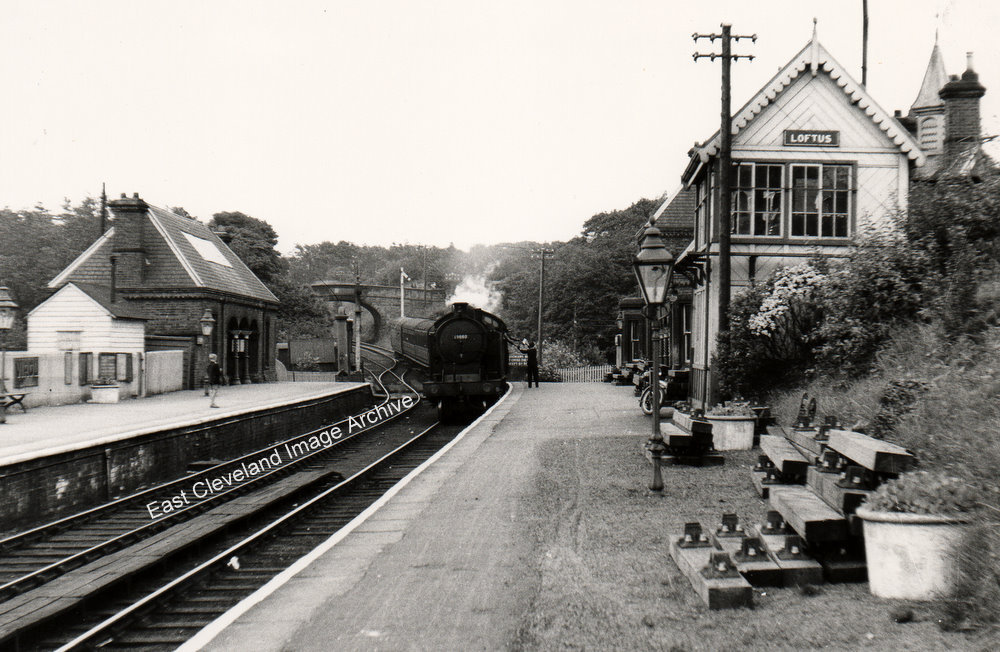
A neat and tidy Loftus Station with a Saltburn-bound train arriving, headed by the ubiquitous tank engine. The Stationmaster is exchanging Tokens with the engine-driver, as Loftus was the end of one control block and the beginning of another in the Token-controlled single track railway system (basically the line was split into sections, each controlled by a token. A train arriving at Loftus would surrender its Token (freeing up the section of track that it was leaving) and would receive a Token allowing it to proceed into the next section of track. If there was still a train in the next section then the Stationmaster couldn’t give the engine driver a Token, so the train would be held at Loftus until the incoming train arrived and surrendered its Token). This system is still in use on the Middlesbrough to Whitby branch, although, sadly there are no more Stationmasters and no more signal box staff (a control section always had a signal box), so there is a box on the control stations with a Victorian Lock Frame (to receive the Token) and another Victorian Lock Frame to dispense the next Token and a computer link to advise the Middlesbrough Control Centre of a ”train in section”. All very sad, but I’ve no doubt all very efficient! Loftus still has trains passing through, but none stop. The line now serves the Cleveland Potash Mine and sadly passengers are no longer a feature of the line after it departs Saltburn. Although special ‘rail tours’ have on occasions used the line.
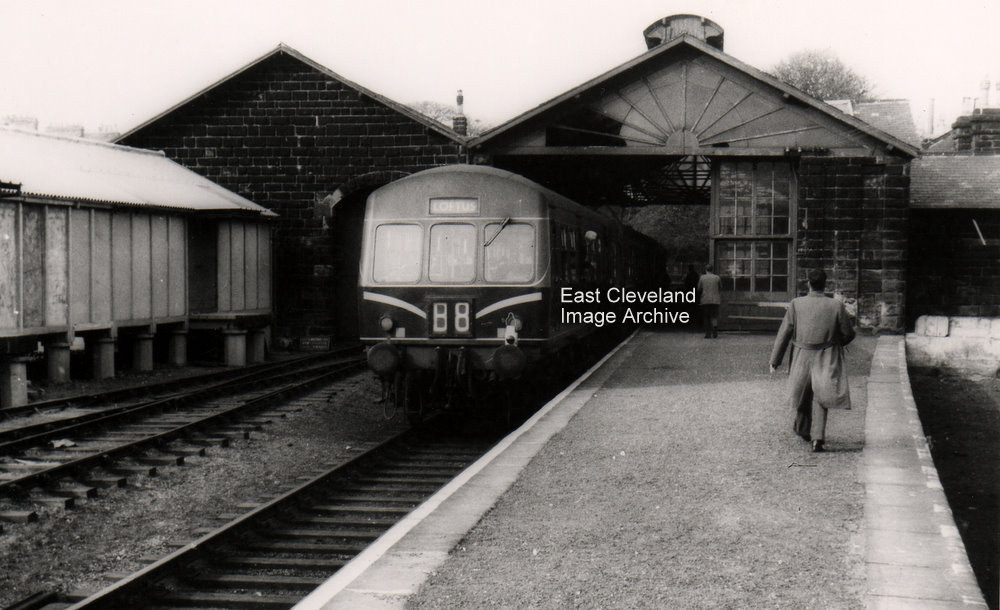
The ubiquitous Diesel Multiple Unit, workhorse of the post-steam era, in this case a Metropolitan-Cammell set, waits at Guisborough station, the station closed in February 1964. Bruce Walton tells us: “I was on the last service train from Guisborough, I have some photos somewhere. A Metro Camell DMU is preserved on the NYMR and I believe on at least one other heritage line.” Russ Pigott advises: “There are several preserved around the country, I bought one a few years ago on behalf of the North Norfolk railway in Sheringham.” Also an update from Peter Cook: “The ‘Now & Then’ magazine has a two page article “The last Goodbye”; in issue No. 59 pages 22 & 23 with photographs; about the final train leaving Guisborough station.”
Image courtesy of the Pem Holliday Collection; also many thanks to Bruce Walton, Russ Pigott and Peter Cook for the updates.
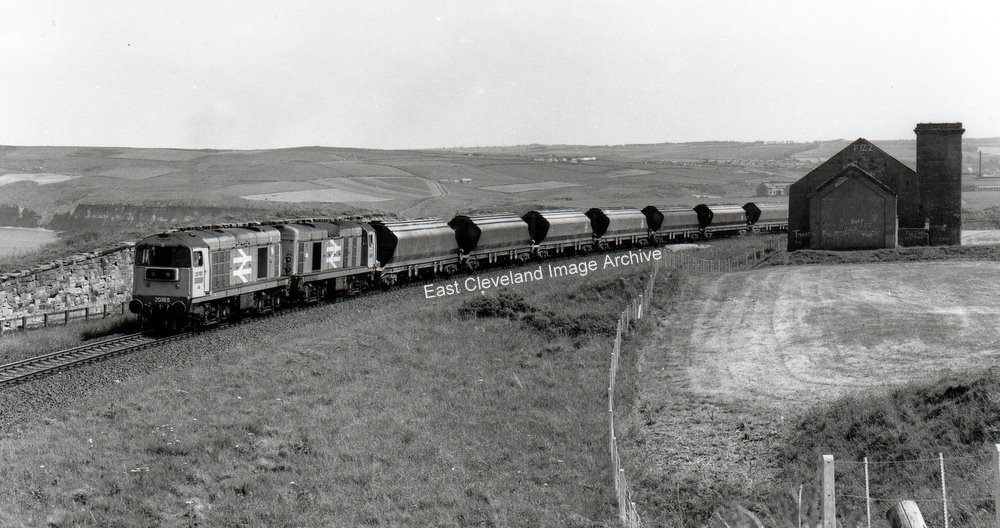
This looks a very modern photograph, about mid-1980’s we’re informed. The locomotives are BR Class 20s, 20165 (from 19878 till 1980 named ”Henry Pease” – how ironic!) and possibly 20118 (latterly named ”Saltburn-by-the-Sea”) – they typically operated ”nose-to-tail” as in this image. With these big arrows they could have been blue with yellow ends, or, even later, grey with yellow ends. On the right of this image is the Guibal fan house at the base of Warsett Hill, Brotton; the only surviving remnant of the Huntcliffe Ironstone Mine.
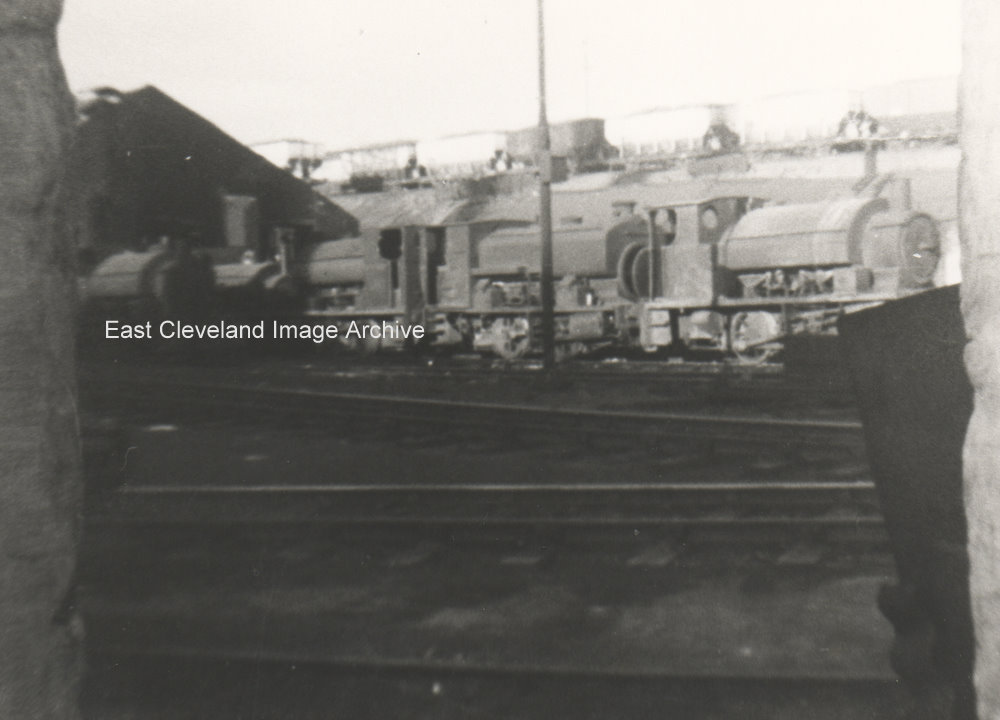
This is a photograph of the old engine sheds at Skinningrove (please correct us if we’re wrong!). The second small ”saddle-tank” loco from the left is the famous Minnie, so loved by all at ”the ’Grove”.
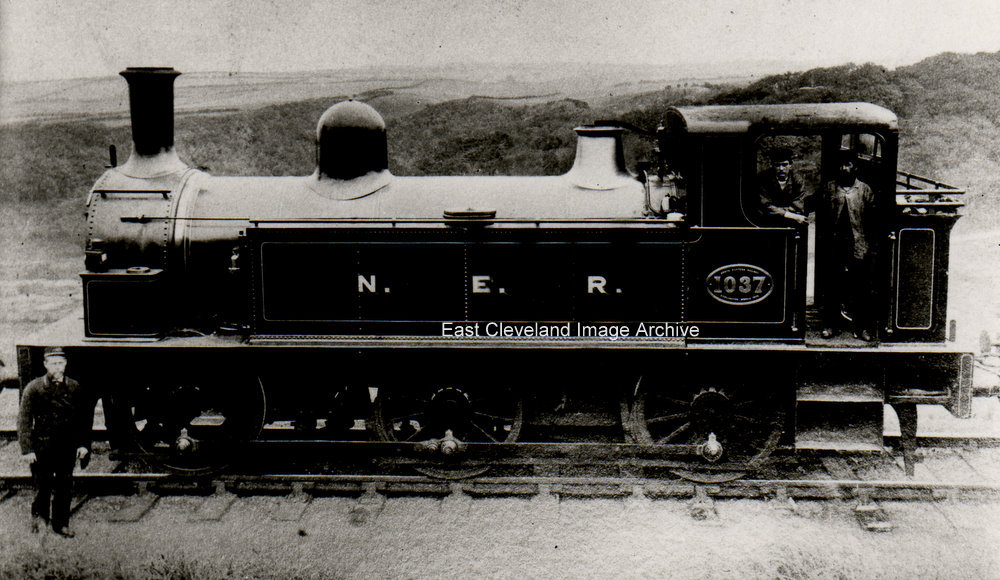
The proud loco men pose for their photographs with their brand new locomotive. The NER insignia being for the North Eastern Railway which became one of the component companies of the London and North Eastern Railway. This is a late Victorian image – I wonder if this is one of the locomotives that used to operate on the Skinningrove ”Z”?
Geoffrey Allen tells us: ”The loco is a class 1037 0-6-0T built at Darlington Works in 1876 one of a class of four specially built in 1876 for the Skinningrove Zig Zag. As pictured it is not new, but as rebuilt in the early 1890′s. The last of the class to work on the Zig Zag was No.1294 withdrawn from Carlin How shed in 1910. This class replaced the 1866 built Class 1196 0-6-0ST’s on the Zig Zag which at 6 tons heavier caused track damage. These were subsequently rebuilt from 1876 as 0-6-0 Tender engines and as rebuilt lasted until 1910.”
Many thanks to Geoffrey Allen for that update.
Page 17 of 17« First«...10...1314151617
|
|








Recent Comments